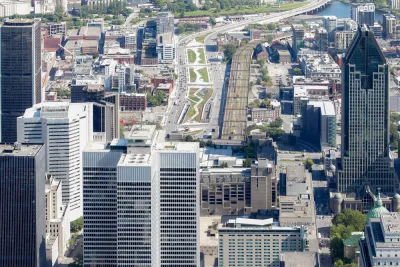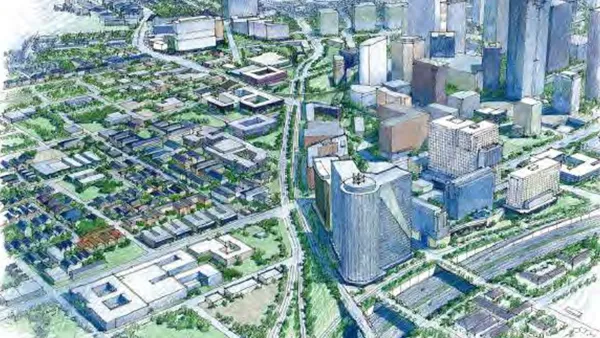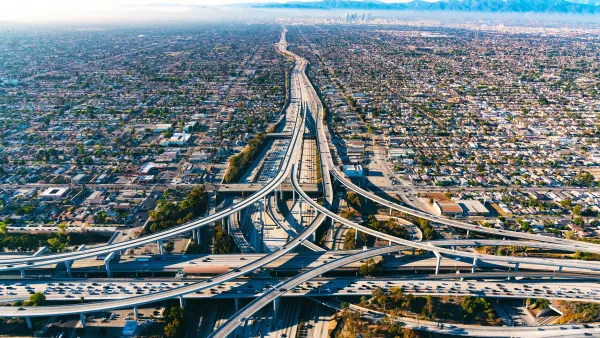Cities across the country are reevaluating the impacts of major highway on neighborhoods and looking for ways to revitalize and reconnect communities.

In a piece rich with visual aids and aerial photos that illustrate how cities looked before highways, New York Times writers Nadja Popovich, Josh Williams and Denise Lu ask "can removing highways fix American cities?"
Until recently, "[f]ederal and state funds have historically gone to building highways, not removing them." Transportation Secretary Pete Buttigieg has acknowledged the unequal legacy of highway projects, saying that "there is racism physically built into some of our highways." To address this, President Biden's infrastructure plan proposes "$20 billion to help reconnect neighborhoods divided by highways."
San Francisco's Embarcadero Freeway provides one of the country's oldest examples of successful highway removal. When the freeway was "irreparably damaged" by the 1989 Loma Prieta earthquake, the area was redeveloped into what is now a bustling pedestrian-friendly waterfront. "[I]n 2013, the city of Rochester, in upstate New York, won a nearly $18 million grant from the Obama administration that allowed it to take out an eastern segment of its sunken Inner Loop freeway, known locally as 'the moat.'" Since then, the area has experienced a transformation that includes new housing, bike lanes, and roads that connect more of the neighborhood to make walking more convenient.
"In recent years, more cities have started to seriously rethink some of their highways. The Congress for New Urbanism, a group that tracks highway removals, counted 33 proposed projects in 28 American cities." While plans for highway removal "could make life better for local residents as well as the planet," the proposals could also lead to displacement of vulnerable communities. "We need to figure out how to change without displacing people," says Dr. Garrick of the University of Connecticut. "The proposed Democratic legislation hopes to avoid that paradox. The bill would fund community outreach and engagement by local groups. And it prioritizes capital construction grants for projects that include measures like land trusts that would ensure the availability of affordable housing for local residents. "
FULL STORY: Can Removing Highways Fix America’s Cities?

Analysis: Cybertruck Fatality Rate Far Exceeds That of Ford Pinto
The Tesla Cybertruck was recalled seven times last year.

National Parks Layoffs Will Cause Communities to Lose Billions
Thousands of essential park workers were laid off this week, just before the busy spring break season.

Retro-silient?: America’s First “Eco-burb,” The Woodlands Turns 50
A master-planned community north of Houston offers lessons on green infrastructure and resilient design, but falls short of its founder’s lofty affordability and walkability goals.

Test News Post 1
This is a summary

Analysis: Cybertruck Fatality Rate Far Exceeds That of Ford Pinto
The Tesla Cybertruck was recalled seven times last year.

Test News Headline 46
Test for the image on the front page.
Urban Design for Planners 1: Software Tools
This six-course series explores essential urban design concepts using open source software and equips planners with the tools they need to participate fully in the urban design process.
Planning for Universal Design
Learn the tools for implementing Universal Design in planning regulations.
EMC Planning Group, Inc.
Planetizen
Planetizen
Mpact (formerly Rail~Volution)
Great Falls Development Authority, Inc.
HUDs Office of Policy Development and Research
NYU Wagner Graduate School of Public Service




























